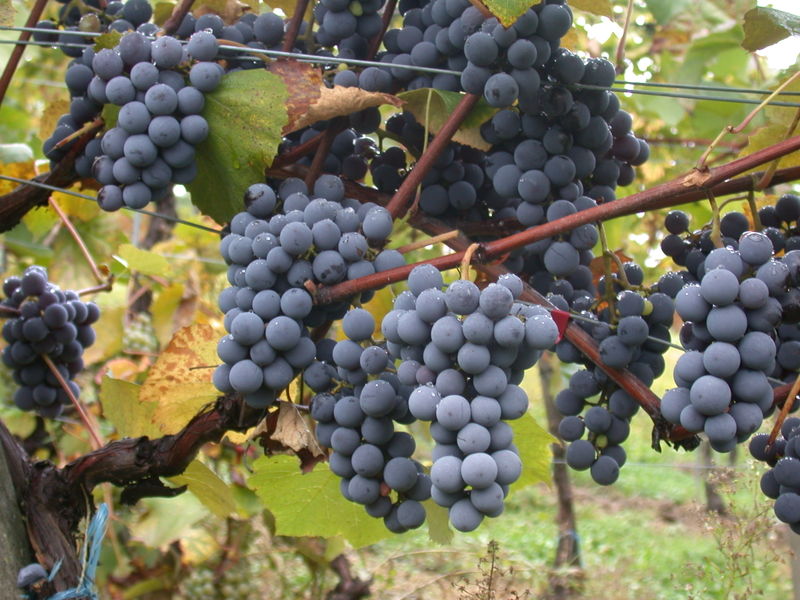
by Ross Kingsley | Jan 8, 2025 | DECODING GRAPES: FROM VINES TO VINTAGE
Gamay, often overshadowed by its more famous cousin Pinot Noir, is a red grape variety known for producing fresh, vibrant, and fruit-forward wines. Its unique characteristics make it a favorite for those seeking light-bodied reds that are easy to drink but still offer complexity and charm.
Origins and History
Gamay traces its roots to the Burgundy region of France, where it was first mentioned in the 14th century. The grape takes its name from the village of Gamay, located south of Beaune. Historically, Gamay faced an uphill battle for recognition. In 1395, Philip the Bold, Duke of Burgundy, famously banned the grape from Burgundy, labeling it “disloyal” and favoring Pinot Noir instead. This decree pushed Gamay out of the prestigious vineyards of Burgundy and into the neighboring Beaujolais region, where it flourished.
Despite its exile from Burgundy’s elite vineyards, Gamay thrived in Beaujolais, developing a distinct identity. Its resilience, early ripening, and ability to produce high yields made it a practical choice for growers. Over time, it became synonymous with the region and earned its rightful place in the wine world.
Famous Wines Using Gamay
The most notable wines made from Gamay come from Beaujolais. Within this region, you’ll find a range of expressions, from simple and refreshing to structured and age-worthy.
-
Beaujolais Nouveau: Perhaps the most famous example, this wine is released just weeks after harvest. It’s celebrated on the third Thursday of November each year, offering a light, fruity, and youthful taste.
-
Beaujolais Villages: A step up from Nouveau, these wines come from designated villages and offer more depth and complexity.
-
Cru Beaujolais: The pinnacle of Gamay wines, these come from ten specific crus (villages) like Morgon, Fleurie, and Moulin-à-Vent. These wines can be rich, structured, and age-worthy, showcasing Gamay’s potential for serious winemaking.
Geographical Reach
While Gamay’s spiritual home remains Beaujolais, its cultivation has spread globally. You’ll find it in parts of the Loire Valley, Switzerland, and even Canada, the United States, and New Zealand. Each region imparts its own unique spin, but the grape’s signature freshness and bright red fruit flavors remain constant.
Conclusion
Gamay is a grape worth exploring for its versatility, history, and delightful wines. Whether you’re sipping a light Beaujolais Nouveau or a complex Cru Beaujolais, you’ll discover why this underrated grape deserves a spot in your glass.
Image Credit: Wikipedia.org
_ _ _
© CHURRASCO PHUKET STEAKHOUSE / ALL RIGHTS RESERVED
>>> Reprinting, reposting & sharing allowed, in exchange for a backlink and credits <<<
Churrasco Phuket Steakhouse serves affordable Wagyu and Black Angus steaks and burgers. We are open daily from 12noon to 11pm at Jungceylon Shopping Center in Patong / Phuket.
We are family-friendly and offer free parking and Wi-Fi for guests. See our menus, reserve your table, find our location, and check all reviews here:
https://ChurrascoPhuket.com/
#Churrascophuket #jungceylon #phuketsteakhouse #affordablewagyu #wagyu
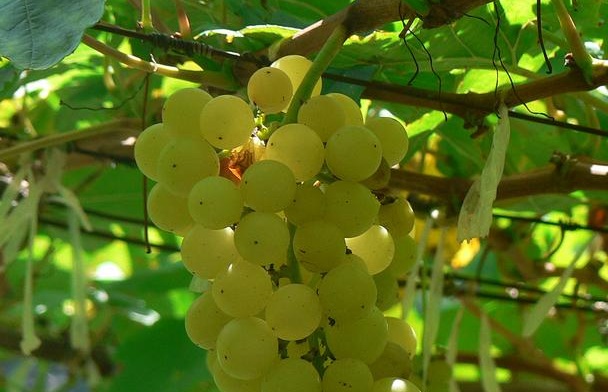
by Ross Kingsley | Jan 8, 2025 | DECODING GRAPES: FROM VINES TO VINTAGE
Chenin Blanc is a white wine grape variety that embodies versatility, elegance, and history. Whether you prefer dry, sweet, or sparkling wines, this grape can cater to a variety of tastes, making it a favorite among both casual wine enthusiasts and seasoned connoisseurs.
Origins and History
Chenin Blanc originated in France, specifically in the Loire Valley, where it has been cultivated since at least the 9th century. It is believed to have been named after Mont Chenin, a location in the Touraine region. By the 15th century, it was firmly established as a key grape variety in the Loire, praised for its adaptability and capacity to reflect the terroir.
One of Chenin Blanc’s defining features is its high acidity, which allows it to age gracefully and perform well in various styles. Historically, it has been used to craft everything from bone-dry wines to luscious dessert wines, such as those from the Quarts de Chaume and Bonnezeaux appellations. Its resilience also makes it suitable for sparkling wines, particularly Crémant de Loire.
Famous Wines
In the Loire Valley, Chenin Blanc shines in several renowned appellations. Vouvray is perhaps the most famous, producing wines that range from dry (sec) to sweet (moelleux) and even sparkling (mousseux). The nearby regions of Savennières and Anjou also boast exceptional Chenin Blanc wines, known for their complexity and longevity.
Outside of France, South Africa has become a powerhouse for Chenin Blanc, where it is often referred to as “Steen.” Introduced to the country in the 17th century, it now accounts for a significant portion of South Africa’s vineyard area. South African Chenin Blancs range from fresh and fruity expressions to barrel-aged wines with rich, nutty flavors.
California, Australia, and New Zealand also produce noteworthy examples, though often on a smaller scale. These regions showcase the grape’s adaptability, with styles ranging from light and crisp to bold and tropical.
Geographical Reach
Today, Chenin Blanc is cultivated across the globe. Its adaptability to different climates and winemaking techniques has secured its place in both Old World and New World vineyards. France and South Africa remain the dominant producers, but you can find exceptional examples in the United States, Australia, New Zealand, and even South America.
Conclusion
Chenin Blanc is a grape worth exploring, offering a remarkable spectrum of styles and flavors. Whether you’re savoring a dry Vouvray, a South African Steen, or a rich dessert wine, this versatile variety continues to delight and surprise wine lovers worldwide.
Image Credit: Wikipedia.org
_ _ _
© CHURRASCO PHUKET STEAKHOUSE / ALL RIGHTS RESERVED
>>> Reprinting, reposting & sharing allowed, in exchange for a backlink and credits <<<
Churrasco Phuket Steakhouse serves affordable Wagyu and Black Angus steaks and burgers. We are open daily from 12noon to 11pm at Jungceylon Shopping Center in Patong / Phuket.
We are family-friendly and offer free parking and Wi-Fi for guests. See our menus, reserve your table, find our location, and check all reviews here:
https://ChurrascoPhuket.com/
#Churrascophuket #jungceylon #phuketsteakhouse #affordablewagyu #wagyu
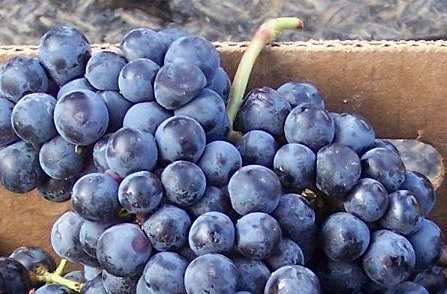
by Ross Kingsley | Jan 8, 2025 | DECODING GRAPES: FROM VINES TO VINTAGE
Cabernet Franc, often overshadowed by its more famous offspring Cabernet Sauvignon, is a grape variety with its own distinctive character and a rich history. Known for its aromatic complexity and elegance, Cabernet Franc has earned its place amongst great wine grapes.
Origins and History
Cabernet Franc’s origins can be traced to the 17th century in southwest France, where it is believed to have been cultivated in the Libournais region. It is one of the parent varieties of Cabernet Sauvignon, which resulted from a natural cross between Cabernet Franc and Sauvignon Blanc. Historical records suggest that Cardinal Richelieu introduced the grape to the Loire Valley, where it found a second home and thrives to this day.
In Bordeaux, Cabernet Franc is a key component of many celebrated blends, particularly in the Right Bank appellations of Saint-Émilion and Pomerol. While often blended with Merlot and Cabernet Sauvignon, it occasionally takes center stage in iconic wines such as Château Cheval Blanc, where it showcases its ability to produce wines of extraordinary finesse and longevity.
Characteristics and Flavor Profile
Cabernet Franc is prized for its medium body, vibrant acidity, and aromatic complexity. It often exhibits flavors of red and black fruits such as raspberry, cherry, and plum, alongside herbal notes like bell pepper, tobacco, and sometimes a hint of violet. These characteristics make it a versatile grape, capable of producing wines that range from light and easy-drinking to structured and age-worthy.
Geographical Reach
While its spiritual homes remain Bordeaux and the Loire Valley, Cabernet Franc has spread to wine regions across the globe. In Italy, it is often found in Friuli and Tuscany, contributing to blends and varietal wines alike. In the New World, it has gained popularity in Canada, particularly in Ontario’s Niagara Peninsula, where it thrives in the cool climate. The United States, Argentina, and South Africa are also exploring Cabernet Franc’s potential, producing wines that reflect their unique terroirs.
Famous Wines
Apart from Château Cheval Blanc, the Loire Valley produces exceptional varietal expressions in appellations such as Chinon, Saumur, and Bourgueil. These wines are renowned for their purity, minerality, and ability to age gracefully, making them a favorite among connoisseurs.
Cabernet Franc’s nuanced profile and adaptability ensure its continued presence on the global wine stage. Whether as part of a blend or standing alone, it remains a grape worth knowing and celebrating.
Image Credit: Wikipedia.org
_ _ _
© CHURRASCO PHUKET STEAKHOUSE / ALL RIGHTS RESERVED
>>> Reprinting, reposting & sharing allowed, in exchange for a backlink and credits <<<
Churrasco Phuket Steakhouse serves affordable Wagyu and Black Angus steaks and burgers. We are open daily from 12noon to 11pm at Jungceylon Shopping Center in Patong / Phuket.
We are family-friendly and offer free parking and Wi-Fi for guests. See our menus, reserve your table, find our location, and check all reviews here:
https://ChurrascoPhuket.com/
#Churrascophuket #jungceylon #phuketsteakhouse #affordablewagyu #wagyu
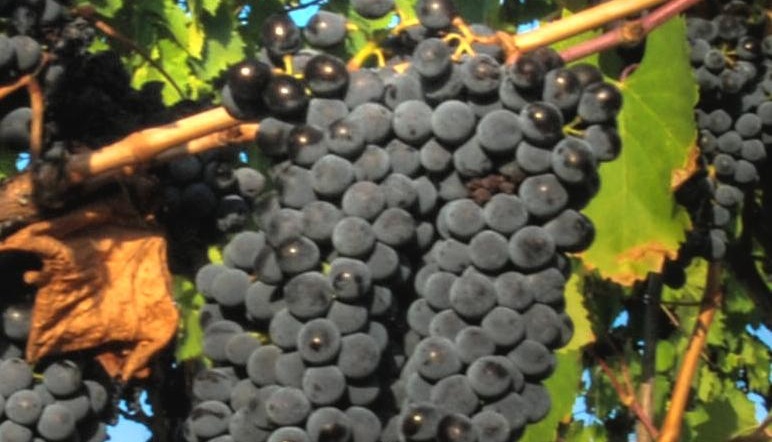
by Ross Kingsley | Jan 8, 2025 | DECODING GRAPES: FROM VINES TO VINTAGE
Sangiovese, one of Italy’s most celebrated grape varieties, is renowned for its versatility and its ability to reflect the nuances of its growing environment. This grape is the star of some of Italy’s most iconic wines. But what makes Sangiovese so special, and where does its story begin?
Origins and History
The origins of Sangiovese trace back thousands of years to central Italy, particularly the Tuscany region. Its name is derived from the Latin “Sanguis Jovis,” meaning “Blood of Jupiter,” a nod to its mythological and cultural significance. Historical records show that Sangiovese was already being cultivated during the Roman Empire, though its reputation as a premium grape didn’t develop until much later. By the Renaissance, Sangiovese had established itself as a staple of Italian viticulture, praised for its adaptability to diverse soils and climates.
Famous Wines
Sangiovese is most famously associated with Tuscany, where it forms the backbone of legendary wines like Chianti, Brunello di Montalcino, and Vino Nobile di Montepulciano. Chianti, in particular, showcases the grape’s bright acidity, red fruit flavors, and earthy undertones. Brunello di Montalcino, crafted from 100% Sangiovese Grosso (a clone of Sangiovese), offers a richer, more age-worthy expression, with flavors of dark cherry, leather, and spice. Meanwhile, Vino Nobile di Montepulciano strikes a balance between elegance and structure, making it another cherished expression of Sangiovese.
Beyond these Tuscan stars, Sangiovese also plays a significant role in modern Super Tuscan wines, often blended with international varieties like Cabernet Sauvignon and Merlot to create bold, innovative styles. Outside of Italy, Sangiovese has found a home in places like California, Argentina, and Australia, though it rarely achieves the same depth and complexity as in its homeland.
Geographical Reach
While Tuscany remains its spiritual and qualitative heart, Sangiovese is planted across much of Italy, from Umbria to Emilia-Romagna and even southern regions like Campania. Globally, its reach is expanding, as winemakers in New World regions experiment with its potential. Despite these efforts, the grape’s tendency to express terroir means that Italian Sangiovese continues to set the benchmark.
Conclusion
Sangiovese is much more than a grape; it’s a cultural icon that tells the story of Italian winemaking. Whether enjoyed in a rustic Chianti or a complex Brunello, this grape embodies a tradition that bridges the past and present of viticulture.
Image Credit: Wikipedia.org
_ _ _
© CHURRASCO PHUKET STEAKHOUSE / ALL RIGHTS RESERVED
>>> Reprinting, reposting & sharing allowed, in exchange for a backlink and credits <<<
Churrasco Phuket Steakhouse serves affordable Wagyu and Black Angus steaks and burgers. We are open daily from 12noon to 11pm at Jungceylon Shopping Center in Patong / Phuket.
We are family-friendly and offer free parking and Wi-Fi for guests. See our menus, reserve your table, find our location, and check all reviews here:
https://ChurrascoPhuket.com/
#Churrascophuket #jungceylon #phuketsteakhouse #affordablewagyu #wagyu
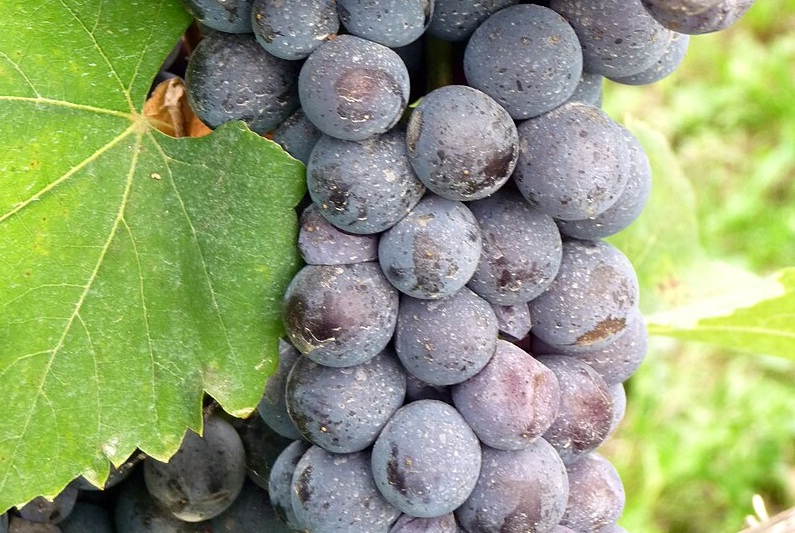
by Ross Kingsley | Jan 8, 2025 | DECODING GRAPES: FROM VINES TO VINTAGE
Sometimes called the “King of Grapes for the Kings of Wine”, and responsible for some of Italy’s most iconic and age-worthy wines.
Origins and History
The Nebbiolo grape’s name is believed to derive from the Italian word nebbia, meaning fog, a nod to the misty harvest season in its native Piedmont region of northwest Italy. References to Nebbiolo date back as early as the 13th century, making it one of the oldest grape varieties still cultivated today.
Nebbiolo thrived in Piedmont’s unique terroir, particularly in the Langhe hills, where the combination of calcareous clay soils and a continental climate proved ideal for its growth. Over centuries, the grape became closely associated with two of Italy’s most celebrated wine regions: Barolo and Barbaresco. Known for their power, structure, and aromatic complexity, these wines have cemented Nebbiolo’s reputation as a noble grape.
Famous Wines Made from Nebbiolo
Nebbiolo’s most notable expressions come from Barolo and Barbaresco, both DOCG appellations in Piedmont. Often referred to as the “King of Wines” and “Queen of Wines,” respectively, Barolo is celebrated for its bold tannins and longevity, while Barbaresco offers a more approachable elegance in its youth.
Other Piedmontese appellations like Roero, Gattinara, and Nebbiolo d’Alba also showcase the grape’s versatility. Outside Italy, Nebbiolo has inspired winemakers in other parts of the world, including California, Australia, and Argentina, though its expression rarely rivals that of its Italian homeland.
Geographical Reach
While Nebbiolo remains primarily rooted in Piedmont, its cultivation has expanded modestly across the globe. It thrives in regions with similar climatic and soil conditions, including parts of the United States, particularly in California’s Central Coast and the Pacific Northwest. In Argentina, the high-altitude vineyards of Mendoza have shown promise in producing compelling Nebbiolo-based wines.
However, despite its global spread, Nebbiolo’s finicky nature—sensitivity to climate and soil—makes it a challenging grape to grow outside Piedmont. As a result, only a handful of non-Italian regions have succeeded in producing wines that truly reflect Nebbiolo’s potential.
Conclusion
Nebbiolo’s deep connection to Piedmont and its ability to craft wines of extraordinary complexity and longevity make it a favorite among connoisseurs. To appreciate Nebbiolo is to appreciate the rich tapestry of winemaking history and the unique terroirs that define it.
Image Credit: Wikipedia.org
_ _ _
© CHURRASCO PHUKET STEAKHOUSE / ALL RIGHTS RESERVED
>>> Reprinting, reposting & sharing allowed, in exchange for a backlink and credits <<<
Churrasco Phuket Steakhouse serves affordable Wagyu and Black Angus steaks and burgers. We are open daily from 12noon to 11pm at Jungceylon Shopping Center in Patong / Phuket.
We are family-friendly and offer free parking and Wi-Fi for guests. See our menus, reserve your table, find our location, and check all reviews here:
https://ChurrascoPhuket.com/
#Churrascophuket #jungceylon #phuketsteakhouse #affordablewagyu #wagyu





